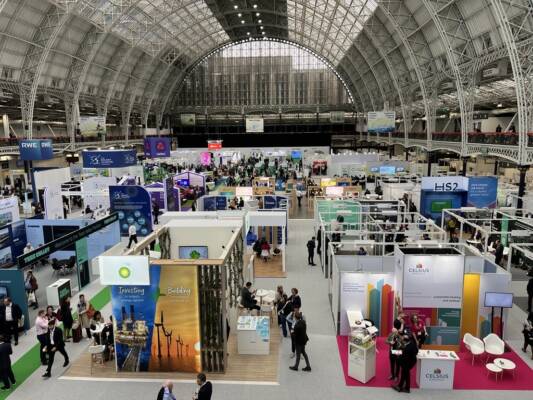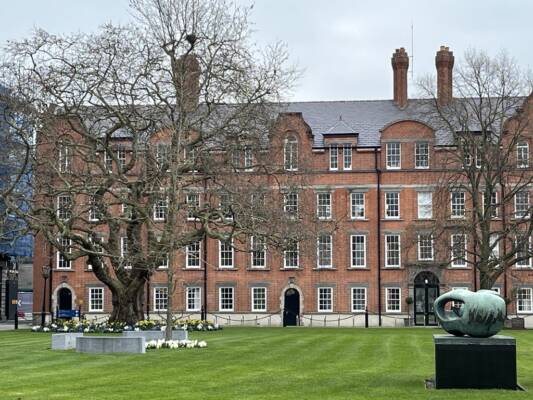Winning the Living Green for Water category in the AIPH World Green City Awards 2022, the phytotechnology stations in the Montréal Botanical Gardens demonstrate how specific qualities of plants can be used to manage water quality through a process known as bioremediation.
Bioremediation is the use of living organisms, such as plants, to remove contaminants from soil or water. Plants remove pollutants from the environment through a variety of mechanisms, including absorption, uptake, and degradation. It is both the physical structure of plants and their physiological mechanisms that contribute to bioremediation capabilities.
The mechanism of bioremediation in constructed wetlands is a complex process that involves the interaction between plants, microorganisms, and the environment. Plants provide habitat and nutrients for microorganisms, which break down pollutants and remove nutrients from the wastewater. Plants absorb nutrients such as nitrogen and phosphorus from the wastewater through their roots. This reduces the number of nutrients available in the water for algae and other aquatic plants to grow, which helps to prevent eutrophication. Plant roots deliver oxygen to the wetland soil, which is essential for the growth of aerobic bacteria. These bacteria use oxygen to break down organic matter and other pollutants in the wastewater. Organic compounds are exuded from plant roots, providing a food source for microorganisms. These microorganisms help to break down pollutants and improve soil quality. Roots act as a physical filter, trapping sediment and other pollutants as the water flows through the soil. This helps to improve water quality by removing suspended solids and other contaminants. Some plant species are able to take up heavy metals and other toxic pollutants from the soil and store them in their tissues. This reduces the bioavailability of these pollutants in the soil, making them less harmful to the environment.
The phytotechnology stations making up the constructed wetlands at the Montréal Botanical Garden were designed to treat wastewater from the garden’s restrooms and dining areas. The plants used in these wetlands are specifically selected for their ability to filter pollutants and absorb nutrients from the wastewater.
These are some of the plant species used in the constructed wetlands at the Montreal Botanical Garden:
- Cattails (Typha spp.): Cattails are a common plant species used in constructed wetlands for their ability to absorb nutrients such as nitrogen and phosphorus from the water. They also help to filter pollutants and provide habitat for wildlife.
- Bulrushes (Scirpus spp.): The fibrous root system of bulrushes helps to stabilise the soil and provide a habitat for microorganisms that break down pollutants in the water.
- Water lilies (Nymphaea spp.): Water lilies are aquatic plants with large floating leaves that shade the water and contribute to reducing algae growth. They absorb nutrients and provide a habitat for aquatic insects and fish.
- Duckweed (Lemna spp.): Duckweed is a small floating plant often used in ponds and wetlands. In constructed wetlands, duckweed helps to reduce algae growth because of its high rate of nutrient uptake.
- Sedges (Carex spp.): Sedges are a group of grass-like plants with a fibrous root system that helps to stabilise wetland soil and provide a habitat for microorganisms.
Plant-based solutions are relatively inexpensive to implement but offer multiple benefits to citizens. Increased vegetation cover generates ecosystem services, provides habitat for wildlife, reduces heat islands, captures stormwater runoffs, and captures atmospheric carbon. For more details on the phytotechnology stations of the Montreal Botanical Gardens, read the AIPH Case Study.
The solutions to Montréal’s problems demonstrated in this case study can be implemented by other cities, companies, and citizens. For example, the team of the Montréal Botanical Garden has developed a partnership with the Shanghai Botanical Garden to co-create solutions adapted to China. The initiative was also the subject of a presentation which was given in 2018 in the Basque Country. This became a source of inspiration for the City of Vitoria-Gasteiz, which relies on similar approaches for the development of certain neighbourhoods.
Overall, the plants used in constructed wetlands at the Montréal Botanical Garden play an important role in filtering pollutants and absorbing nutrients from the wastewater while also providing habitat for wildlife and contributing to the overall aesthetics of the wetland
ecosystem.


























